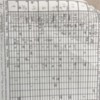Kevin A posted:My apologies if the spirited debate has gone away from the OP question. I was just curious for a number of reasons. I know there are pitchers who are ready to go with their next pitch before the batter is even back in the box. Having signals come in, catcher's translate and then present the signal seems to be a hurdle for a pitcher who enjoys working fast. I would presume the catcher would still have to work with an indicator to keep base runners off balance...
When talking with my 2020 and why he prefers to call the games he said that when he gets to batters or situations where he wants to work backwards, the coach would seldom do that. He knows what pitches are truly working for the pitcher, knows what the ump is giving or not giving. And in the end he wants the responsibility to be 50-50. He has to call the pitch and then receive/frame and block and the pitcher has to throw the right pitch and hit his target.
Since the higher up you go , the responsibility is greater, guess that is why coaches leave the decision making with themselves if their job can be on the line.
We have played with teams where the coaches are clueless (nothing more than a well intentioned father) and then played for a coach who made it to AAA and was a AA HOF for the Phils. He was a catcher too and he felt his job was to teach his catchers how to handle pitchers. He really trusted his catchers.
There has been a few where the coach, for the most part, isn't skilled and we have had issues with my son having a negative reaction. Essentially if he thinks your full of crap, he does what he has to do. And YES , I know its something that needs to change......Nothing new you can advise on that..
No need to apologize. A thread that morphs shows the readers are thinking. 
Truth is, there are strong opinions about calling pitches, and not much proof substantiating any of them. That makes it frustrating for players like your boy and parents like yourself because it seems a lot like luck and hoping that whoever’s calling pitches in the system you’re in, knows what they’re doing.
Personally, I don’t think it makes all that much difference, but I’d like to see the pitcher throwing pitches he has confidence in.


